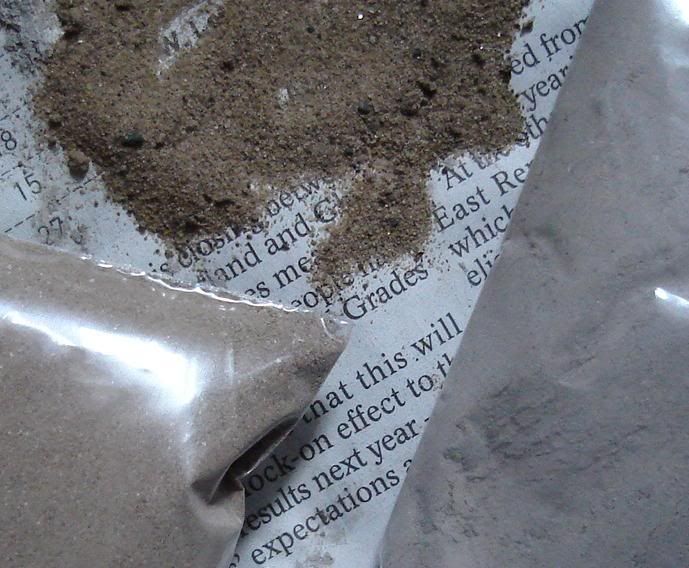What I have done over the past few weeks was produce alkaline powder by burning beech wood. (see previous posts about this and sourcing the wood) Theophilus says to use ashes, but I wanted to see how much salt I could produce, since by the early 16th century glassmakers were certainly making the salt, rather than just using ashes. This has the advantage of meaning you have more control over the glass and what is in it, since simply using the ashes means you can end up with bits of earth and suchlike from the original material, such as bracken roots. (See previous post)
The end result was, not a lot of salt.
I faithfully took the ashes, and boiled them up in a pot, until they were dry, and had turned into a fine gray powder. This powder tested at a pH of about 10, so definitely had some caustic properties in it. I suspect it has a mix of sodium and potassium salts as well as bits of charcoal and other things.
So, to make glass, I weighed out 20grams of ordinary sand with 10 grams of the salt I had previously made. I mixed it up as much as possible, then placed it in the pot you can see in the picture below:

The furnace was set up with a 2 brick deep volume for the charcoal, and the bellows in their usual place. Then, with it lit, I bellowed it up to over 1,000C in an hour or so. It takes a long time to reach thermal equilibrium between the inside and outside of the furnace. With the crucible inside, and glowing red, I held it at 1030-1050 for 10 minutes, and stirred the sand/ salts mix occasionally. It definitely fizzed a little around the thousand mark, and oddly enough potassium carbonate melts at 980C…
This photo shows the pot in use:

The problem was that the pot actually cracked during use. It has since split into several parts, and it is clear that it is too thick, and could not cope with the different heating rates of different parts of the pot. Fortunately I did not lose any of the fritted mixture.
In this photo you can see the two ingredients and what they combined to make. The sand is at the top, the boiled ashes to the bottom right, and the fritted material to the bottom left. It doesn’t look very good I am afraid.

Next time I shall heat it up to over 1,000C, and mix in more boiled ashes. I suspect that the percentage of sodium and potassium salts might not be high enough, so if I mix more in I stand a better chance of getting the sand to melt. The salts melt at a lower temperature and act as a flux, taking the sand (silica) into solution at a much lower temperature. Otherwise I would have to go to at least 1600C for silica to melt. Which is impossible with my set up.
Next time I shall hopefully get a nice blob of glass.
No comments:
Post a Comment